Originally created for sharing photos, experiences, and memories, Instagram has evolved into a multifaceted platform. While users can still use the app for its original purposes, it also became one of the key channels for brands to engage with consumers in an authentic way, acquire new customers, and showcase their products.
Instagram has become a fierce arena for vying for users’ attention. Businesses have to compete with local and international companies, influential individuals who promote rival brands, key opinion leaders, and one-person brands.
Conducting a regular competitor search and analysis is no longer enough for those who use social media as a priority channel for their marketing purposes. Brands must identify major competitors on Instagram if they want to keep their names in the public mind.
Despite how obvious it is to simply search on Instagram, there are many other techniques brands can find competitors on Instagram. This is exactly, what we’ll do in this blog post. We’ll explore 14 methods from hashtag searches to offline approaches.
Identify Your Instagram Competitors with Tools
Let’s start with the fastest method: tools. In light of the increasing competitiveness on social media platforms, numerous tools have emerged that facilitate competitor searches on Instagram.
Influencer marketing platforms
 Influencer marketing platforms generally provide different tools and features to identify Instagram competitors. HypeAuditor, for example, offers a discovery tool with advanced filters where you can search among more than 8 million Instagram brand accounts.
Influencer marketing platforms generally provide different tools and features to identify Instagram competitors. HypeAuditor, for example, offers a discovery tool with advanced filters where you can search among more than 8 million Instagram brand accounts.
Or, you can uncover numerous identical accounts in your industry with the Lookalike tool. As a third solution, you can check the top trending and most mentioned Instagram accounts and pick rising brands or newcomers. With both features, you can filter for the county, niche, account type, and size.
Apart from this many influencer marketing platforms offer social listening or content monitoring capabilities. With these features, you can track your competitors’ social media posts and learn from their successes and pitfalls.
Some influencer marketing platforms include competitor and market analysis functions. If you are interested in expanding your marketing strategies with influencer marketing, these tools will provide you with a wealth of information about rival brands’ influencer marketing efforts from top influencers and major KPIs to budget and spending estimates.
Social listening tools
 Another tool that may help you with identifying new Instagram competitors is social listening tools. As their main purpose, they enable you to follow discussions on social media about brands, products, and services uncovering users’ interests, sentiments, and opinions.
Another tool that may help you with identifying new Instagram competitors is social listening tools. As their main purpose, they enable you to follow discussions on social media about brands, products, and services uncovering users’ interests, sentiments, and opinions.
You can select and track several hashtags and keywords relevant to your industry or product lines. By checking conversations that include these phrases and hashtags, you can identify key competitors on social media. After gathering numerous rival brands that are active on the platform, you may conduct a closer analysis of their Instagram activities.
You may uncover competitors if you monitor the mentions of your brand. People sometimes leave their opinions on social media, mentioning several brands or products in one post. Check whether other businesses are mentioned with your company's name in the same context.
As a third option, brand mentions and tracking niche hashtags can unearth influencers and accounts that mention your business and other key players. Businesses that are regularly positively acknowledged by influential people will become immensely popular among users. It’s worth keeping an eye on them!
Tools used for market analysis
Market research tools usually gather insights about customers and trends in different ways to help businesses map out their industry and market environment. Here’s a list of the most common market analysis tools and how they can help you find your competitors on Instagram.
3.1. Survey platforms: Using these platforms, companies can create surveys and polls and enquire about their customers’ social media usage and preferences. Surveys can uncover what other brands they follow on social media and engage with. You can learn what rival companies’ products or services they tried out and are satisfied with. SurveyMonkey, Qualtrics, and Typeform are the most popular survey tools on the market.
3.2. Focus group tools: Another way to probe your target audience for social media usage is focus group tools. You can create online interviews and discussions with them to learn what other brands they like and why. Focus group tools include UserTesting, Forsta, and Remesh.
3.3. Customer analysis tools: These tools allow companies to track users’ interactions with their digital products or social media posts. If, for example, a user clicks on a link in your brand’s Instagram post, then you’ll be able to examine what other accounts that user engages with. Amplitude and Mixpanel are two commonly used services for this.
How to Use Instagram to Find Competitors
 A time-consuming, however, reasonable solution is to go directly to Instagram and look for similar brands in your niche there. Again, there are numerous options available for you to do this.
A time-consuming, however, reasonable solution is to go directly to Instagram and look for similar brands in your niche there. Again, there are numerous options available for you to do this.
Discover competitors with Instagram’s Search bar
Instagram’s Search bar lets you search by keywords, hashtags, and mentions. Type in industry terms or keywords related to your niche, products, or services.
Your search can be equally fruitful if you enter industry-specific hashtags, whether broad or specific. Now, you only have to take a closer look at the posts where these phrases and hashtags are used and pick brands that could count as your rivals.
You can try finding competitors on Instagram by searching for hashtags like #giveaway, #gifted, and #ad. In general, influencers use these hashtags when they promote a product or a brand in their content. However, this search will deliver many irrelevant hits as well.
Comb through the Explore page
The Explore page showcases content based on a user’s interests and previous search habits. It sometimes also features posts from accounts you already follow. Hence, it can be used as a way to discover your competition’s Instagram accounts.
Review your followers
Scan your Instagram followers’ profiles and check whether they are associated with other businesses or offer products similar to yours. These users or the companies they are linked to can be your possible competitors.
According to the platform itself, 90% of Instagram users follow at least one business. Chances are that many follow more than one or at least mention multiple brands and products on social media. Go through the ‘Following’ list of your most enthusiastic followers and look for accounts from your sector. Although this is a toilsome task to accomplish, you might identify emerging brands they engage with regularly.
Check out the ‘Suggested for you’ section on Instagram
Instagram’s algorithms compile accounts you could be interested in following under the ‘Suggested for you’ tab. The suggestions are based on your preferences and activities. Scrutinize thoroughly these Instagram accounts because you may find potential competitors among them.
Uncover rival brands on Instagram through influencers
A hashtag search on Instagram can yield other results besides uncovering competition: you can spot influencers who use these hashtags or keywords relevant to your field. It’s worth scrutinizing these influential people since they might worked together with upcoming businesses who again could be your competitors on Instagram.
Find competitors’ ads with Facebook’s Ad Library
The Meta Ad Library promotes transparency and is publicly accessible which is great news. It is even more fantastic that you can search for advertisers by keywords and phrases, and you may narrow your search by country and platforms (Instagram, Facebook, and Messenger). The database will display active and inactive ads that fit your search criteria. And yes, browsing Facebook’s Ad Library is technically not a direct search on Instagram but it is still a vital option for finding your competitors on the platform.
Additional Ways to Discover Instagram Competitors
Survey your customers and followers
You can conduct brief surveys through email or pop-up pages on your website and gain insights from your newsletter subscribers or page visitors about their consumer habits, including competitor brands on Instagram they interact with. Instagram, along with Facebook, Twitter, and LinkedIn offer simple poll features which also make a helpful way to gather information about competitors. Alternatively, you can use a previously mentioned survey platform or focus group tool.
Set up Google Alerts for niche-related keywords
Google Alert is a free service that enables users to set up keywords specific to their industry, products, or services and sends them emails whenever that phrase is mentioned online. Although this solution focuses on mostly news articles, blog posts, and other publications, it still can uncover new names in your niche. If you manage to uncover rival businesses this way, you may check their Instagram accounts and analyze if they pose a threat to your business.
Search for Instagram competitors on Google
Google is one of the most obvious and easiest ways to find your competitors on Instagram. Simply combine your industry’s name with ‘Instagram’ and your search can come up with valuable results. You can find local brands if you expand your search terms with your city or region.
You can experiment with other ideas such as, including specific key phrases and characteristics closely related to your product. For example, a cosmetic company that sells natural skin care products can search on Google with the keyword combination ‘organic skincare Instagram’.
Monitor your industry through relevant blogs and articles
You can inform yourself about industry and market trends and discover new competitors from relevant blogs and publications. These articles may cover the social media marketing activities of other key players in your sector, highlighting those that executed a successful campaign or gained momentum on Instagram. To ease your workload set up keywords associated with your field in social listening tools or alerts.
Read industry reports from authoritative sources
You can access countless market, industry, and government reports and statistics online. These reports allow you to understand where the market is going, and whether there are disruptive elements. Many documents also cover competitor analysis and benchmarking. All this information can help you get a clearer picture of your competitive landscape and unearth your competitors. Once you have several names, you investigate their activities on Instagram.
Conclusion
How to find your competitors on Instagram is a question that everyone can answer in at least one way. Leveraging Instagram’s various features is a good idea, but you should use a combination of several additional methods we mention in this article. A holistic strategy will ensure that no stone is left unturned and you’ll remain current both on Instagram and other digital channels.




